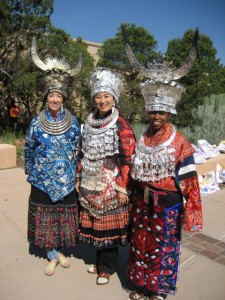Stellar Shigras
Andean textiles have the longest historical record in the world, with scholarly estimates dating them back to 3000 B.C.
![ecu8057[1]](https://blog.itscactus.com/wp-content/uploads/2012/07/ecu805711-196x300.jpg)
This shigra is particularly valuable, both because of its size and because of the pictoral as well as geometric aspects of its design.
Despite their emergence on the contemporary style scene, the method of producing shigras has changed little since ancient Incan days. Leaves from the succulent plant known variously as cabuya, penca, fique, or maguey (similar to agave) are harvested and cut into slender strips. Next, they are soaked for a period of 15 days to separate the pulp from the fibers. Once they are separated and dried, the fibers are cut int
o fine strands and dyed. Originally, vegetal dyes were used, but as they are not colorfast, aniline dyes have largely replaced them. The colored fibers are then wound onto spindles and from there, the weaving begins.
Starting at the base, the weaver – who is almost always female – uses a blunt needle and begins a looping sequence rather like crocheting. Round and round she goes in an ever-widening circle, eventually forming the seamless bag. She will create wonderful patterns of color as she works her way through the piece. Prior to 1970, human and animal forms were very typical, though those are rarely seen now, having
given way to a trend of geometric shapes. The finished bag will have two long, braided, cross-body fiber straps.
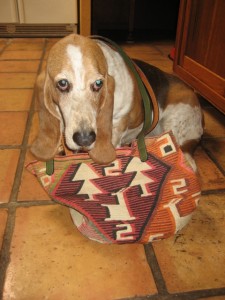 That’s how mine looked, the day it was given to me. A beautiful shigra with bold geometric patterns, animals, trees, numbers, and letters in pink, red,orange, brown and black and two long fiber straps. Two days later, however, it had been altered by my dog, who decided to add a little fiber to her diet, I guess. She had a mouthful and my straps were a tattered mess. I said, “Oh no, no, no, you naughty Little Darling,” or maybe something a tiny bit stronger, and saved what I could. I retied the ends and that worked well enough for a while, but admittedly, they were a little short. Eventually I replaced them entirely with leather. This was at no small expense, but in all honesty, I think it was worth the price. The new handles nicely preserve the integrity of my shigra and I happily carry a fantastically functional and fashionable Andean textile everywhere I go. My basset hound too, is pleased with my shigra’s stylish utility and she is very glad she didn’t eat the whole thing after all.
That’s how mine looked, the day it was given to me. A beautiful shigra with bold geometric patterns, animals, trees, numbers, and letters in pink, red,orange, brown and black and two long fiber straps. Two days later, however, it had been altered by my dog, who decided to add a little fiber to her diet, I guess. She had a mouthful and my straps were a tattered mess. I said, “Oh no, no, no, you naughty Little Darling,” or maybe something a tiny bit stronger, and saved what I could. I retied the ends and that worked well enough for a while, but admittedly, they were a little short. Eventually I replaced them entirely with leather. This was at no small expense, but in all honesty, I think it was worth the price. The new handles nicely preserve the integrity of my shigra and I happily carry a fantastically functional and fashionable Andean textile everywhere I go. My basset hound too, is pleased with my shigra’s stylish utility and she is very glad she didn’t eat the whole thing after all.

![2522[1]](https://blog.itscactus.com/wp-content/uploads/2012/07/25221-290x300.jpg) Haiti is inspirational. It’s colorful and it’s filled with amazing people that possess incredible vibrancy and joy of spirit. Their ability to produce wonderful art, to continually create and re-create and innovate is a phenomenal. But it’s a tough, tough place. That’s why, no matter how tired we are of hearing about suffering and hardship and chaos and disaster, we have to listen and confront the realities of those who struggle just to survive from one day to the next in Haiti and elsewhere around the globe.
Haiti is inspirational. It’s colorful and it’s filled with amazing people that possess incredible vibrancy and joy of spirit. Their ability to produce wonderful art, to continually create and re-create and innovate is a phenomenal. But it’s a tough, tough place. That’s why, no matter how tired we are of hearing about suffering and hardship and chaos and disaster, we have to listen and confront the realities of those who struggle just to survive from one day to the next in Haiti and elsewhere around the globe. o how was it? Being there for the dual purposes of A) supporting the worthy goals of the Market and B) personal acquisition, I can tell you without reservation, it was GREAT! The high quality of the art and the variety of goods available is incredible. Plus, it’s such a treat – not to mention an education – to meet the artists. In many cases, there is the additional opportunity to see them demonstrate their craft. Throw in the chance to participate in an event that last year generated $17,300/booth for the artists to take home to their families and communities and WOW, you’ve got plenty to feel good about.
o how was it? Being there for the dual purposes of A) supporting the worthy goals of the Market and B) personal acquisition, I can tell you without reservation, it was GREAT! The high quality of the art and the variety of goods available is incredible. Plus, it’s such a treat – not to mention an education – to meet the artists. In many cases, there is the additional opportunity to see them demonstrate their craft. Throw in the chance to participate in an event that last year generated $17,300/booth for the artists to take home to their families and communities and WOW, you’ve got plenty to feel good about.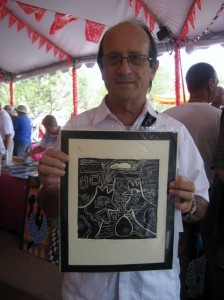
 NEXT TIME – for this has become a July tradition for me ranking right up there with fireworks on the Fourth – I will definitely purchase the early admission tickets again, if not go to the Market Opening Party on Friday night. You pay more for these – in the case of the Opening Party, quite a lot more. However, with the Market’s increasing popularity has come increasing crowds. That’s good in the Big Picture, but from a shopping standpoint, this means that by 10:00 and lasting until about 4:00 on Saturday, the booths do
NEXT TIME – for this has become a July tradition for me ranking right up there with fireworks on the Fourth – I will definitely purchase the early admission tickets again, if not go to the Market Opening Party on Friday night. You pay more for these – in the case of the Opening Party, quite a lot more. However, with the Market’s increasing popularity has come increasing crowds. That’s good in the Big Picture, but from a shopping standpoint, this means that by 10:00 and lasting until about 4:00 on Saturday, the booths do 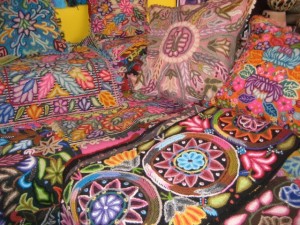
 become quite congested. From 4:00 until closing time at 6:00, it slows down and the tents become more navigable once again. Sunday, the second and final day, gets pretty reasonable after lunch, ” they say.” The risk there is that many of the “goodest goods” are long gone. Who wants to be saying “Coulda…shoulda…woulda,” at the end of the Market and still have money left in their pocket, begging to be spent? Not ME!
become quite congested. From 4:00 until closing time at 6:00, it slows down and the tents become more navigable once again. Sunday, the second and final day, gets pretty reasonable after lunch, ” they say.” The risk there is that many of the “goodest goods” are long gone. Who wants to be saying “Coulda…shoulda…woulda,” at the end of the Market and still have money left in their pocket, begging to be spent? Not ME!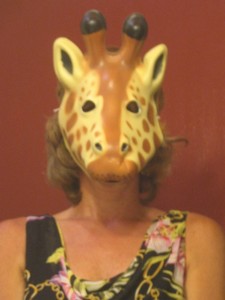
![rec381[1]](https://blog.itscactus.com/wp-content/uploads/2012/06/rec3811-85x300.jpg) How do collections get started? Maybe we’re drawn to certain images because they remind us of something special – a favorite time or place or experience. I was with my good friend, Jennifer at the San Diego Zoo one day, having an absolute ball. We were in our 40’s mind you, but I started playing with the masks at the gift shop. Holding up first the giraffe mask and then the panda mask to my face, I asked her, “Which do you like better?” To which she thoughtfully replied, “Well, the giraffe is more your color.” Immediately, I started laughing so hard I could scarcely stand up, and I bought the giraffe mask right then and there. Since then, I have bought a few other giraffe items and find myself always tempted by more.
How do collections get started? Maybe we’re drawn to certain images because they remind us of something special – a favorite time or place or experience. I was with my good friend, Jennifer at the San Diego Zoo one day, having an absolute ball. We were in our 40’s mind you, but I started playing with the masks at the gift shop. Holding up first the giraffe mask and then the panda mask to my face, I asked her, “Which do you like better?” To which she thoughtfully replied, “Well, the giraffe is more your color.” Immediately, I started laughing so hard I could scarcely stand up, and I bought the giraffe mask right then and there. Since then, I have bought a few other giraffe items and find myself always tempted by more. For color, cultural richness, and acquisitive opportunity, you can’t beat the International Folk Art Market. Held annually the second full weekend in July in Santa Fe, NM, this year’s Market holds plenty of promise. Beyond Borders has sponsored artists in the past, and though we’re not participating as a vendor this year, it’s not because it’s not worthy. It IS! By plane, train, automobile, or on horseback, if you can make it, GO!
For color, cultural richness, and acquisitive opportunity, you can’t beat the International Folk Art Market. Held annually the second full weekend in July in Santa Fe, NM, this year’s Market holds plenty of promise. Beyond Borders has sponsored artists in the past, and though we’re not participating as a vendor this year, it’s not because it’s not worthy. It IS! By plane, train, automobile, or on horseback, if you can make it, GO!
